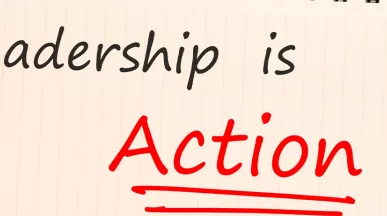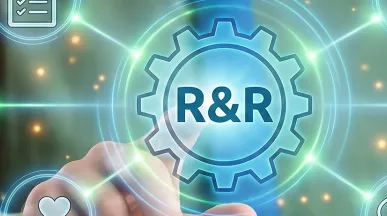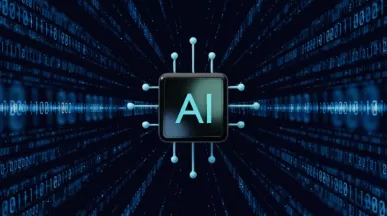Peer-to-peer Recognition Programs Drive ROI

By Kelley Briggs
Peer-to-peer recognition from peers is a powerful way to build our relationships and tie together that social cohesion that everyone appreciates. Whether employees work from home, or at the company headquarters, they want to feel valued and respected by others around them. Receiving recognition that their contributions matter — especially to peers — creates a thriving culture for all employees.
Companies take recognition seriously. Brandon Hall Group’s 2019 HCM Outlook shows that 30% of companies are planning large investments in rewards and recognition.1 They realize the massive revenue and cost-saving potential by maximizing their recognition efforts. By following a few of these keys for recognition in your organization, you can build a collaborative, open environment where your employees feel valued and respected — no matter where they are.
Peer-to-peer Recognition Programs build a collaborative team environments
“Workplace recognition motivates employees, gives them a sense of accomplishment, and makes them feel appreciated for their work. The act of recognition also sends messages to other employees about what success looks like. In this way, recognition is both a tool for personal reward and an opportunity to reinforce the desired behavior to other employees.”2
While recognition is an important aspect of the experience of individual employees, it also enhances the entirety of the organization by building a culture of collaboration. Gallup noted this effect in its “State of the American Workplace” report. Psychologists have long noted this social cohesion as well. In his book The Righteous Mind, Jonathan Haidt explains we’re biologically wired to seek a sense of belonging. “For millions of years,” he wrote, “our ancestors’ survival depended upon their ability to get small groups to include them and trust them, so if there is any innate drive here, it should be a drive to get others to think well of us.”3
The same is true in workplaces. Recognition helps us feel accepted by our group, where others can think well of us and we think well of them. Recognition creates a better working atmosphere by helping the group stay positive and focused on your long-term goals along with promoting a sense of team spirit. It also provides a safe space where employees can feel comfortable sharing feedback and trying new ideas.
Researchers at MIT note the importance of a culture that allows positive — and negative — feedback and recognition: “Leaders must also create a culture of psychological safety, giving employees the freedom to express concern when things aren’t going right and feel they have the ability to take risks. Doing so allows employees to share new ideas and to believe they are being heard. 4
Peer Recognition develops a connection among dispersed teams
One of the biggest difficulties of recognition is with remote workers and dispersed teams. Because most informal recognition happens in between meetings or at the lobby coffee pot, remote workers can feel left out. Buffer is a popular example of a company with a fully remote team. Many of their innovations in working as a fully remote workforce have led other companies to rethink their approaches. This is critical because remote work is here to stay. In their recent “State of Remote Work 2019” report, 99% of respondents wanted to work remotely at least some of the time in their career. 5
To create more connections between remote teams, Buffer created what they call “pair calls,” where two people who haven’t interacted in a long time are paired up for a weekly chat. There’s no agenda or real purpose in the call — it’s simply to talk and get to know one another.6 Over time, practices like this build a more cohesive culture.
Recognition is not only a top-down method
While we seem to think that recognition from the most senior executive at the organization would be the most impactful, research shows something very different. It turns out that while “aligning executive plans to transformation goals and long-term incentives can help to ensure a focus on future success,” it’s crucial to note that “innovation awards or modern recognition programs can incentivize change for non-executives.”7
Gallup also shows this point in their research, where “employees report that the most meaningful recognition comes from their manager, followed by recognition from a leader or CEO, their manager’s manager, customers, and peers.”8
In short, top-down approaches to recognition are less impactful on the employee experience than when recognition comes from the employee’s direct manager and peers. As we mentioned above, when peers recognize other peers, this builds a self-reinforcing culture of health and recognition.
Conclusion
With all these keys combined, organizations are seeing rewards for their recognition by driving engagement and productivity in their workforce, which increases revenue and cuts costs. If you’re looking for these powerful benefits of recognition in your organization today, we have just the thing for you.
Sources
1 “2019 HCM Outlook.” Brandon Hall Group. 2019. Page 12. http://go.brandonhall.com/hcm-outlook-2019
2 “State of the American Workplace.” Gallup. 2017. Page 106. https://www.gallup.com/workplace/238085/state-american-workplace-report-2017.aspx
3 Jonathan Haidt. The Righteous Mind (New York: Vintage Books, 2012), 90.
4 “How Effective Leaders Drive Digital Change” 2017. https://sloanreview.mit.edu/article/how-effective-leaders-drive-digital-change
5 “State of Remote Work 2019.” Buffer. https://buffer.com/state-of-remote-work-2019
6 Courtney Seiter. “How We Stay in Sync as a Distributed Team: The Buffer Daily Pair Call.” Buffer. July 24, 2014. https://buffer.com/resources/buffer-daily-pair-call/
7 Courtney Seiter. “How We Stay in Sync as a Distributed Team: The Buffer Daily Pair Call.” Buffer. July 24, 2014. https://buffer.com/resources/buffer-daily-pair-call/
8 “State of the American Workplace.” Page 107.





